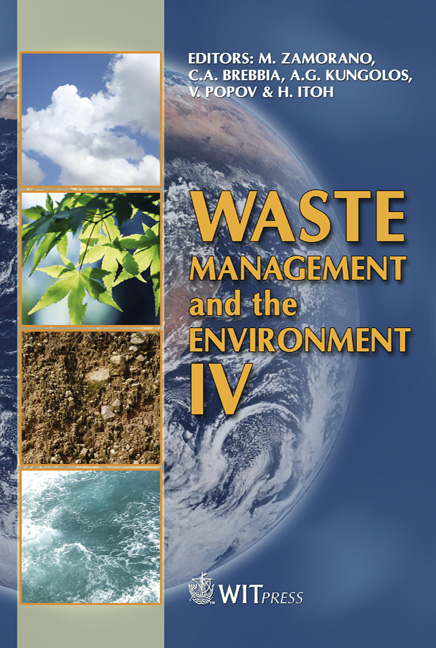Study Of PHAs (polyhydroxyalkanoates) Production From Activated Sludge
Price
Free (open access)
Transaction
Volume
109
Pages
8
Page Range
837 - 844
Published
2008
Size
348 kb
Paper DOI
10.2495/WM080851
Copyright
WIT Press
Author(s)
D. He, B. B. Zhang, Y. F. Tsang & H. Chua
Abstract
Sludge deposition is of high concern for managers of wastewater treatment plants due to limited landfill space and increases in deposition fees. Reduction of the amount of sludge can benefit a plant’s operational cost. In activated sludge, numerous bacteria synthesise and accumulate polyhydroxyalkanoates (PHAs). PHAs can be completely biodegraded to water and carbon dioxide, and have similar properties to conventional plastic. So, PHAs have been recognized as good candidates for plastics. Thus, production of PHAs can reduce sludge amount and also have environmentally-friendly effects. However, their high price compared with conventional plastics has limited their use in a wide range of applications. In this study, we optimized conditions to produce PHAs. Activated sludge bacteria from a conventional wastewater treatment process were induced to accumulate PHAs under different carbon-nitrogen (C:N) ratios. Both the highest net cell growth and polymer production yield were achieved under a C:N ratio of 96. Moreover, carbon source is another important factor in synthesis. The composition of the polymer accumulated was dependent on the valeric acid (C5) content in the feed. Keywords: activated sludge, polyhydroxyalkanoates (PHAs), carbon-nitrogen ratios, carbon source. 1 Introduction Plastic materials have become an integral part of contemporary life because of their many desirable properties, including their duralibity, flexibility and resistance. However, many artificial polymers are found to be harmful to the environment due to the non-biodegradable properties, which means they are not easily decomposed in nature by microorganisms (Huang et al. [1]). So there is a
Keywords
activated sludge, polyhydroxyalkanoates (PHAs), carbon-nitrogen ratios, carbon source.





